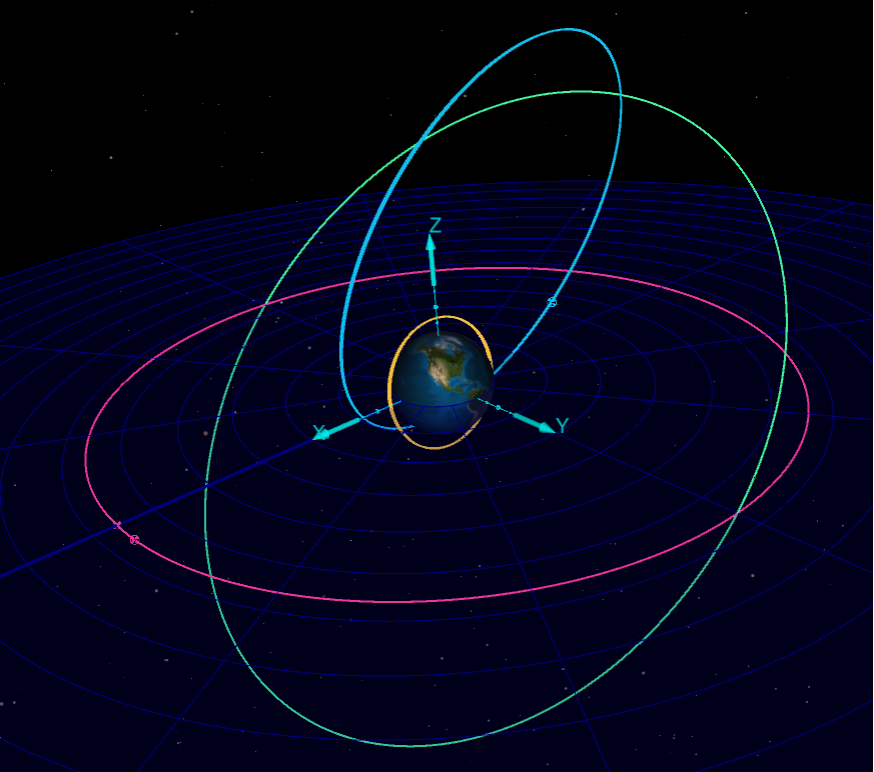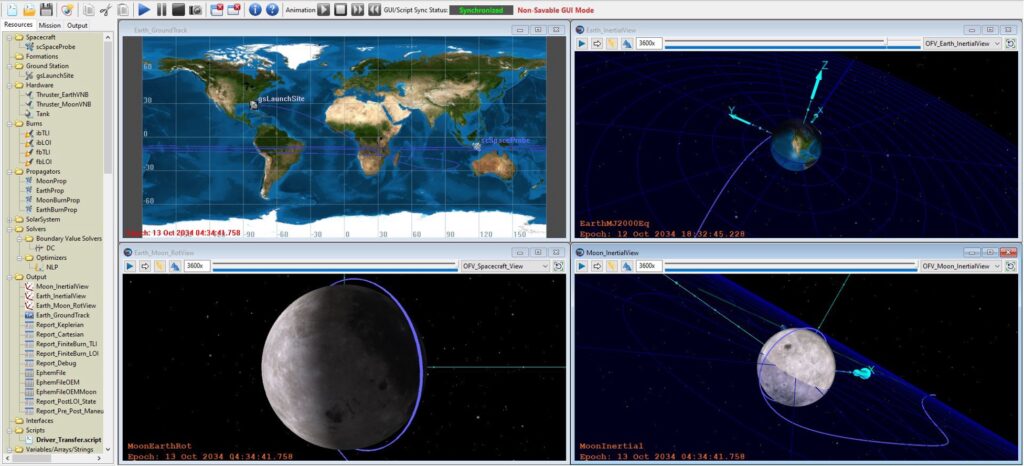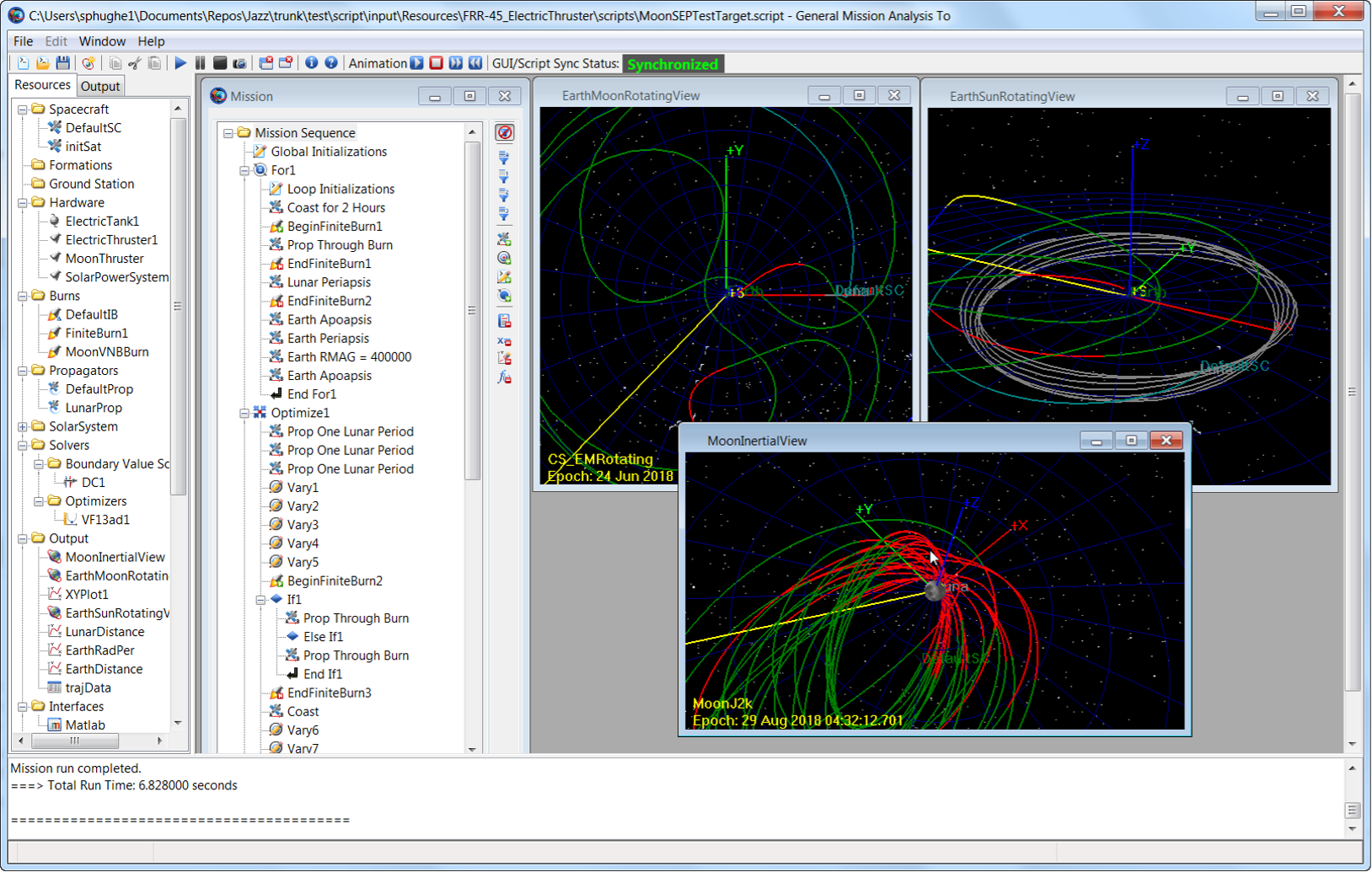General Mission Analysis Tool (GMAT)

Empowering Global Space Missions with Comprehensive Design, Analysis, and Operations Support
The General Mission Analysis Tool (GMAT) is used to facilitate mission design and proposal development for all project types, including scientific research and flight mission operations. Comprised of two million source lines of code, GMAT exists as one of NASA’s most expansive and successful open-source software projects, providing comprehensive ground-based flight dynamics support. Used by NASA centers, national and international agencies, academia, businesses and the broader public, GMAT is currently being implemented on a global scale, with 300,000 downloads since its inception. Most impressively, GMAT performs a wide array of integral duties, including critical spacecraft design, analysis, and operations support. More specifically, GMAT spacecraft design tasks include mission and orbit planning, orbit optimization, trade studies, maneuver planning, and propulsion system sizing. Relatedly, GMAT analysis tasks include visualization, launch window calculations, navigation data simulation, sensitivity and Monte-Carlo studies. Lastly, GMAT operations support tasks include orbit product generation, orbital event detection/prediction, batch and Kalman Filter orbit determination, maneuver execution, calibration and reconstruction, End-of-Life modeling, ephemeris prediction and comparison, and collision avoidance pre-cursor calculations.


For more information on GMAT, please visit the links listed below:
General Mission Analysis Tool (GMAT) is managed by ETD’s Mission Engineering & System Analysis Division (MESA). Contact MESA for more information.
